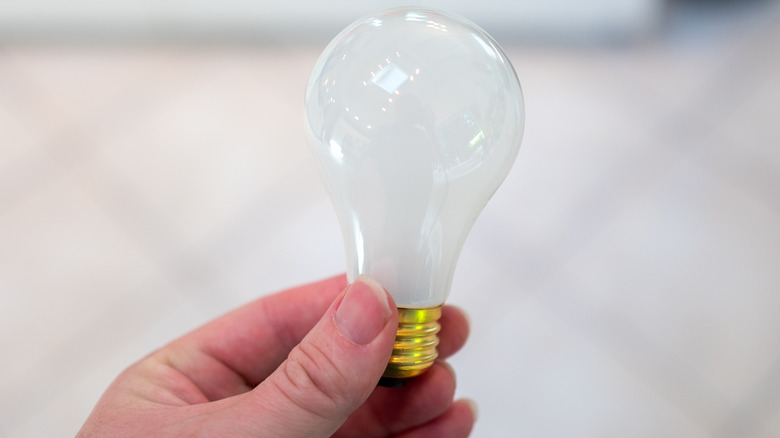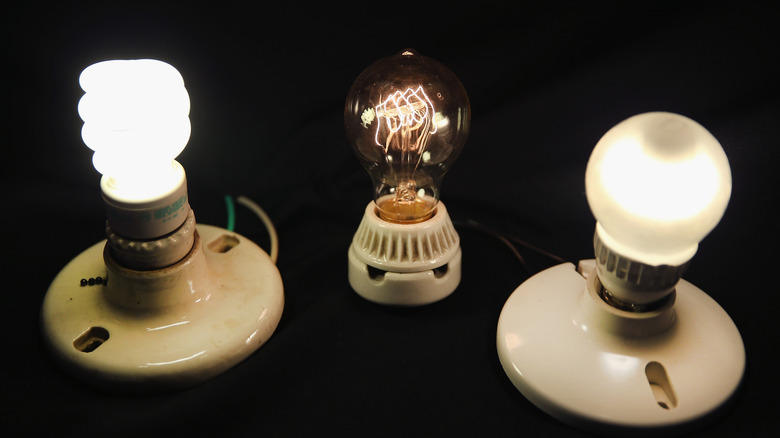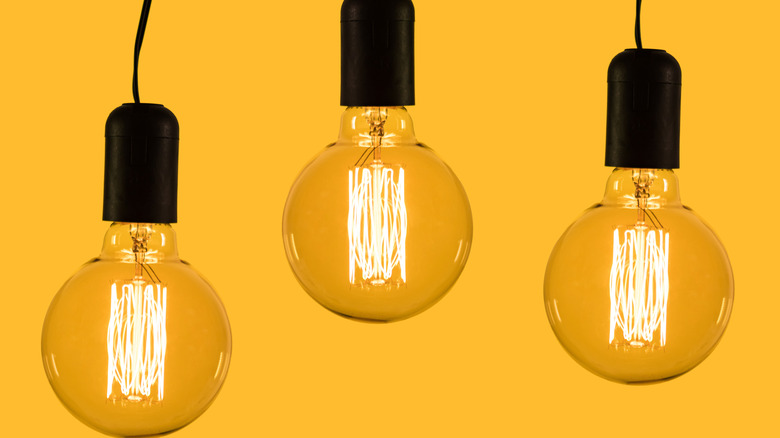Are Incandescent Lightbulbs Making A Comeback? Here's What We Know
Incandescent bulbs were effectively banned in the U.S. starting in 2023 when the Department of Energy (DOE) enforced the 45 lumens per watt efficiency standard. That rule, first mandated by the 2007 Energy Independence and Security Act, made it illegal to manufacture or sell traditional incandescent and halogen general service lamps. Now, confusion has resurfaced after President Trump's January 2025 executive order, "Unleashing American Energy," mentioned consumer choice for appliances, including lightbulbs.
Some reports framed this as the ban being lifted, but that isn't accurate. Executive orders cannot override statutory requirements like the 45 LpW standard. For now, incandescent bulbs that don't meet those rules remain prohibited. Still, political efforts are underway to change course. Mike Lee, Republican Senator for Utah, introduced the Liberating Incandescent Technology (LIT) Act in May 2025, aiming to repeal Biden-era rules, roll back the 2024 update requiring 120 lumens per watt by 2028, and remove lightbulbs from the DOE's Appliance Standards program altogether.
Why were incandescent bulbs banned?
The U.S. Department of Energy has established regulations that focus on improving the efficiency of household appliances for multiple decades. Compared to LEDs, incandescent bulbs use far more power, wasting about 90% of their energy as heat. A 60-watt incandescent produces the same brightness as an 8-watt LED, and its lifespan is about 1,000 hours, compared to 30,000–50,000 hours for LEDs. The regulatory body claimed this change would lead to reduced costs for consumers and decreased environmental pollution.
DOE estimates the 45 LpW rule saves Americans nearly $3 billion annually on utility bills and reduces carbon emissions by over 200 million metric tons across 30 years, equal to the yearly output of 28 million homes. The Biden administration strengthened its stance in 2022 by enforcing the 45 LpW rule and establishing the 120 LpW standard, which will take effect in 2028.
What happens next?
Despite political pushes to revive incandescents, the legal framework still makes a comeback unlikely in the short term. The 45 lumens per watt requirement is law under the Energy Policy and Conservation Act, and DOE cannot weaken standards without new justification. Congress could pass legislation like the LIT Act, but that would require broad political support. Even if repeals succeed, manufacturers face hurdles. After two years of adapting production lines and distribution channels to LEDs, ramping incandescent production again would take time and investment.
Retailers also cleared out incandescent stock when bans took effect, meaning availability won't bounce back overnight. Meanwhile, DOE is preparing to enforce the 120 LpW standard, which could make even most current LEDs noncompliant by 2028. So while incandescent bulbs remain a political talking point, consumers should not expect them to flood shelves soon. Specialty bulbs like appliance lamps or infrared lamps remain exempt and available, but the familiar warm A19 incandescent is still out. They might have their downsides, but for now, LEDs are the standard, and unless Congress or DOE makes sweeping changes, that won't change.


